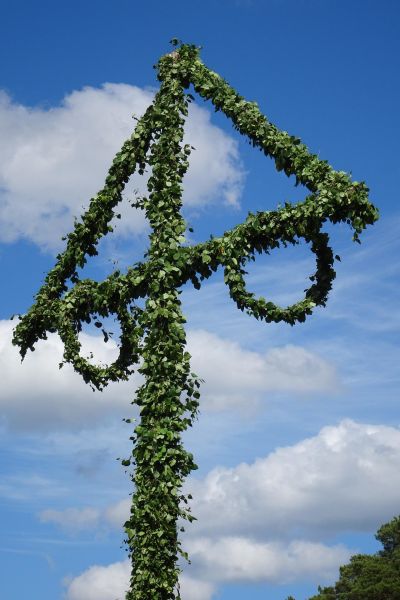| Month | Working days | Working hours | Sat & Sun. | Others |
|---|---|---|---|---|
| January | 22 | 176 | 8 | 1 |
| February | 20 | 160 | 8 | 0 |
| March | 21 | 168 | 10 | 0 |
| April | 20 | 160 | 8 | 3 |
| May | 20 | 160 | 9 | 2 |
| June | 18 | 144 | 9 | 4 |
| July | 23 | 184 | 8 | 0 |
| August | 21 | 168 | 10 | 0 |
| September | 22 | 176 | 8 | 0 |
| October | 23 | 184 | 8 | 0 |
| November | 20 | 160 | 10 | 0 |
| December | 21 | 168 | 8 | 2 |
| Total annual working hours | 251 | 2008 | 104 | 12 |
| Average / Month | 20.92 | 167.33 | 8.67 | 1.00 |

Working days per year 2025
An average of 160 working hours per month or 250 working days per year is usually referred to when discussing workload. But these numbers are not always accurate. For example, for 2025, the number of working hours varies from 144 to 184, with an average of 167 hours each month. In total, there will be 251 working days, which leaves 116 days off. In the table below, we provide a detailed overview of the number of working days, working hours, Saturdays, Sundays and other days off - such as national holidays, Midsummer's Eve, Christmas Eve and New Year's Eve. If a holiday falls on a Saturday or Sunday, it is counted under "Sat & Sun". We base these calculations on a standard eight-hour workday. Which days are considered holidays in Sweden are defined by Lag (1989: 253) on public holidays. Most people have the following holidays off, even if they fall on a regular working day:
- New Year's Eve
- Christmas Eve
- Easter Day and Pentecost
- New Year's Day and Thirteenth Day of Christmas
- May 1
- Christmas Day and Christmas Eve
- Good Friday and Easter Monday
- Ascension Day
- Sweden's National Day
- Midsummer Day
- All Saints Day
- Midsummer Eve
Feel free to check out our calendar here on the right, which contains information such as e.g. name days and a little history about what happened on that particular day.
All Saints Day
 This day is always celebrated on Saturday, which falls between October 31 and November 6. The day after the church is dedicated to paying attention to all the saints, a day of remembrance for the dead. It has long been a custom in Christianity to pay attention to saints and martyrs on different days. All Saints' Day is the day on which all the saints who have not been given a day of their own are noticed and remembered. The reason why all saints and martyrs are celebrated is to strengthen the spiritual bond between the living on earth and the dead who have come to heaven. In this way, the image and belief that there is life after death is strengthened. On this Memorial Day, it is common to light candles at graves in the cemetery. All Saints' Day originally originated from the church, but in modern times it is also common for non-believers to light candles in cemeteries to remember loved ones who have passed away. This tradition began in 1900 and was first noticed mainly in the big cities, and then spread to the whole country. In the Anglo-Saxon countries, Halloween and "all saints day" are celebrated. Halloween originally comes from a Celtic festival where people lit bonfires and wore costumes to ward off ghosts. Halloween always falls on October 31st, while "all saints day" falls on November 1st.
The main symbolism used during All Saints' Day is the light. Every candle that is lit is a symbol of life that shines, comes and goes out. During the season when All Saints' Day is celebrated, it is dark, whereupon the symbolic effect of lighting candles becomes extra strong when the candles stand out and are very clearly visible. Sometimes All Saints' Day occurs at the same time as the Anglo-Saxon tradition of Halloween, which is why many people probably have a hard time separating the two. Halloween is something that is also celebrated in Sweden to a large extent, when children dress up and go on "mischief or sweets".
This day is always celebrated on Saturday, which falls between October 31 and November 6. The day after the church is dedicated to paying attention to all the saints, a day of remembrance for the dead. It has long been a custom in Christianity to pay attention to saints and martyrs on different days. All Saints' Day is the day on which all the saints who have not been given a day of their own are noticed and remembered. The reason why all saints and martyrs are celebrated is to strengthen the spiritual bond between the living on earth and the dead who have come to heaven. In this way, the image and belief that there is life after death is strengthened. On this Memorial Day, it is common to light candles at graves in the cemetery. All Saints' Day originally originated from the church, but in modern times it is also common for non-believers to light candles in cemeteries to remember loved ones who have passed away. This tradition began in 1900 and was first noticed mainly in the big cities, and then spread to the whole country. In the Anglo-Saxon countries, Halloween and "all saints day" are celebrated. Halloween originally comes from a Celtic festival where people lit bonfires and wore costumes to ward off ghosts. Halloween always falls on October 31st, while "all saints day" falls on November 1st.
The main symbolism used during All Saints' Day is the light. Every candle that is lit is a symbol of life that shines, comes and goes out. During the season when All Saints' Day is celebrated, it is dark, whereupon the symbolic effect of lighting candles becomes extra strong when the candles stand out and are very clearly visible. Sometimes All Saints' Day occurs at the same time as the Anglo-Saxon tradition of Halloween, which is why many people probably have a hard time separating the two. Halloween is something that is also celebrated in Sweden to a large extent, when children dress up and go on "mischief or sweets". Midsummer Eve

Midsummer Eve: An important tradition in Swedish culture
Midsummer Eve is an important weekend in Sweden and other Nordic countries, which is celebrated on the longest day of the year. It is a time of joy, celebration and the arrival of summer. The weekend has its roots in paganism, when it was celebrated as a holiday in honor of the sun. Today Midsommarafton is one of the most loved weekends in Sweden, and the celebration differs between different parts of the country.
The celebration of Midsummer Eve through the ages: From paganism to modern festivity
Midsummer Eve has its origins in paganism, when it was celebrated as a holiday in honor of the sun. The weekend was a symbol that summer had arrived and that the warmth and light would return. Over time, the celebration of Midsummer Eve has evolved and adapted to the Christian faith, but many of the traditional activities have been preserved.
In modern Sweden, Midsummer Eve is celebrated on June 20-22 every year, and the weekend is one of the most popular weekends in the country. Many people take time off from work and go home to their families to celebrate together. There are also many public celebrations and events that are arranged, such as dancing around the maypole and picnics in nature.
Midsummer Eve has also become an important tourist attraction, with many visitors traveling to Sweden to participate in the celebrations. The weekend has also become a symbol of Swedish culture and tradition worldwide.
How Midsummer's Eve is celebrated in Sweden: A guide to the traditional activities
Midsummer Eve is known for its traditional celebrations, which have been preserved through generations. One of the most iconic activities is the Maypole Dance, where people sing and dance around a pole decorated with flowers and ribbons. The dance symbolizes the sun's path through the sky and is an important part of the celebration.
Another tradition is to pick flowers and make wreaths to wear on the head. Many people choose to go out into nature and pick their own flowers, while others buy ready-made wreaths.
There are also a variety of traditional dishes eaten during Midsummer Eve, such as herring and smorgasbord. Herring is a type of pickled fish that is very popular in Sweden, while smörgåsbord is a meal consisting of a variety of starters, main courses and desserts.
Memories from Midsummer Eve: A personal story about the celebration of the summer holiday
Midsummer Eve is a weekend that has always been special to me. I remember how as a child I always woke up early in the morning to go out and pick flowers with my family. Then we went home and cooked a big dinner together, with all the different kinds of herring and smorgasbords that we loved. After dinner it was time to dance around the Maypole, and I remember how happily I laughed as I twirled around with my friends.
Even though I am no longer a child, Midsummer Eve is still one of my favorite holidays of the year. I always look forward to seeing my family and friends and celebrating together, and enjoying all the wonderful traditions that come with the weekend.
